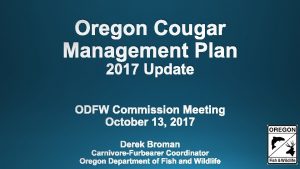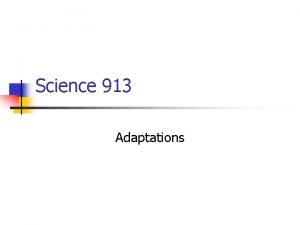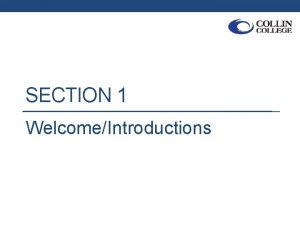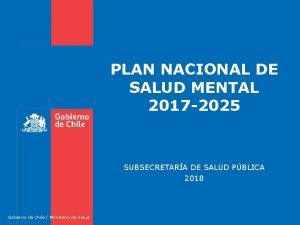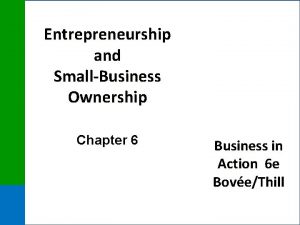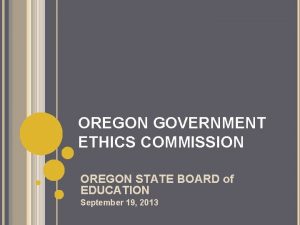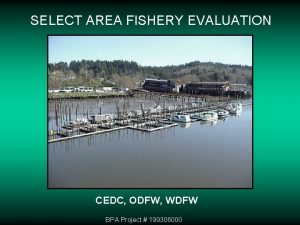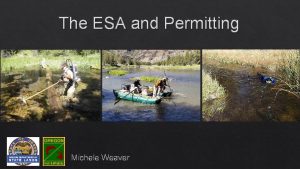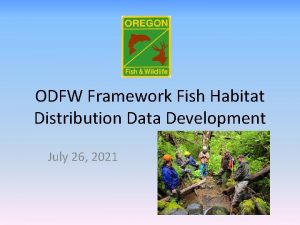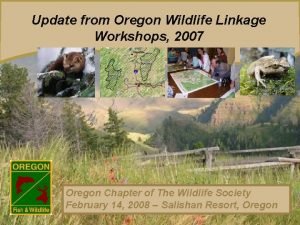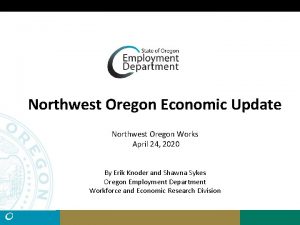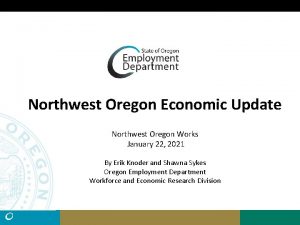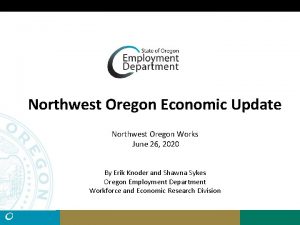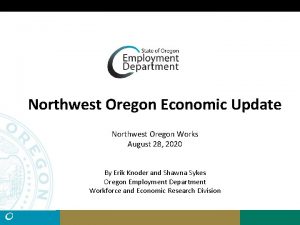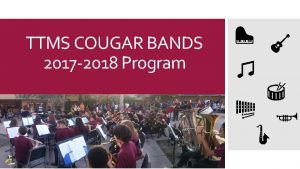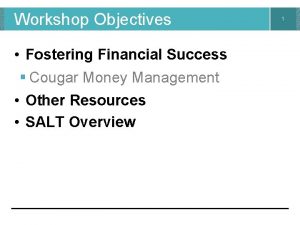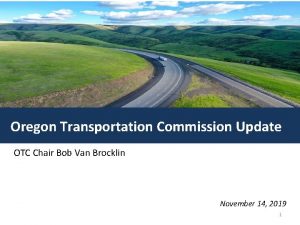Oregon Cougar Management Plan 2017 Update ODFW Commission


















- Slides: 18

Oregon Cougar Management Plan 2017 Update ODFW Commission Meeting October 13, 2017 Derek Broman Carnivore-Furbearer Coordinator Oregon Department of Fish and Wildlife

Presentation Outline • Review Process • Plan Overview and Recent Changes • Plan Summary

Review Process Commission Meetings • April 2016 • • October 2016 • • Stakeholder Panels Public Testimony August 2017 • Public Testimony Public & Tribal Correspondence Mountain Lion Workshop

2006 Plan Chapter I- Introduction Chapter II- Life History of Cougars Chapter III- Information on Oregon Cougars Chapter IV- Oregon Management History Chapter V- Objectives Chapter VI- Adaptive Management Chapter VII- Economics Chapter VIII- Literature Cited 2017 Update Chapter I- Introduction Chapter II- Information on Oregon Cougars Chapter III- Objectives Chapter IV- Adaptive Management Chapter V- Literature Cited

Chapter II- Information on Oregon Cougars Notable Additions, Updates • Genetics • Hunting and Hunter Harvest • Density • Survival • Interactions with Ungulates • Population Growth Rates • Oregon Cougar Research • Oregon Publications/Reports • Interactions with Other Carnivores • Habitat

Chapter III- Cougar Management Objectives • Update Objectives continue to maintain healthy populations, reduce conflict, and manage cougars in concert with other game mammals • Objectives utilize Adaptive Management • Propose reduction from five to four Objectives • Two Objectives remain mostly unchanged

Chapter III- Cougar Management Objectives Objective 1: Manage for a cougar population not below 3, 000 cougars statewide. • Objective used to establish zone quotas (mortality caps) • Ensures continued focus on resilient, healthy populations through mandatory check-ins, monitoring, and research • Uncertainty on cougar population responses to wolves restricts ability to set management objectives

Chapter III- Cougar Management Objectives Objective 2: (So long as objective 1 is met) Manage cougar-human safety/pet conflicts as measured by nonhunting mortalities. • Ensures continued focus on proactively and correctively addressing human safety/pet conflict • Focus on non-lethals and use of new tools and techniques • Requires continued recording and monitoring of conflict • Change to conflict measurements and thresholds • Dynamic and indication of events outside the norm • Comprehensible calculation for staff and public

Chapter III- Cougar Management Objectives Objective 2: (So long as objective 1 is met) Manage cougar-human safety/pet conflicts as measured by nonhunting mortalities. • Ensures continued focus on proactively and correctively addressing human safety/pet conflict • Focus on non-lethals and use of new tools and techniques • Requires continued recording and monitoring of conflict • Change to conflict measurements and thresholds • Dynamic and indication of events outside the norm • Comprehensible calculation for staff and public

Chapter III- Cougar Management Objectives • Change to conflict measurements and thresholds • Dynamic and indication of events outside the norm • Comprehensible calculation for staff and public

Chapter III- Cougar Management Objectives Objective 3: (So long as objective 1 is met) Manage cougar-livestock conflicts as measured by non-hunting mortalities. • Ensures continued focus on proactively and correctively addressing livestock conflict • Focus on non-lethals and use of new tools and techniques • Requires continued recording and monitoring of conflict • Change to conflict measurements and thresholds • Dynamic and indication of events outside the norm • Comprehensible calculation for staff and public

Chapter III- Cougar Management Objectives Objective 4: (So long as objective 1 is met) Manage cougar populations in a manner compatible and consistent with management objectives for other game mammals outlined in ODFW management plans. • Ensures continued focus on relationships between cougars and other game mammals • Recommends increased cougar take in areas where predation is a significant factor to game populations failing to meet objectives • Emphasis on hunting as primary tool for increased take

Chapter IV- Adaptive Management • Findings on 2006 Plan hypotheses: cougar take to reduce human conflict, improve ungulate populations, or reduce livestock conflicts, and confirm cougar population resiliency • Management Scales and Objectives • Attention to fine-scale situations • Target Area Management • Stakeholder Attention • Frequency of Use • Design and Considerations • Zone Updates

Chapter V- Literature Cited • 100+ new citations Appendices • Habitat Analysis • Past target area and expense summaries • Incident Response Guidelines* • Captive Kitten Guidelines* • Glossary* • Target Area development* * Adopted into rule

External Review 22 Cougar Researchers & Managers • Ten state agencies, two federal agencies, two universities, & one NGO • Six responded, three provided comment • Questions and concerns relative to their research and jurisdiction • Support use of scale-specific and adaptive management • Valuable points made and questions posed • Minor edits made but no notable changes

Summary • Added new information and removed unnecessary sections • Increased information on indicators of population health and trends • Attention to coexistence and responses to sightings and conflict (damage/safety) • Attention to the science behind target areas, evaluation of the management technique, and lessons learned

Summary • Objectives identify current and future cougar management priorities: • Increased abundance into northwest Oregon and Willamette Valley • Human dimensions • Density estimates in new areas • Habitat and refugia analyses • Population models and monitoring tools • Cougar response to wolves

 Odfw commission meeting
Odfw commission meeting Is an alternative of log based recovery
Is an alternative of log based recovery Cougar structural adaptations
Cougar structural adaptations Collin college help desk
Collin college help desk Cougar lacrosse club
Cougar lacrosse club Cascade ridge ptsa
Cascade ridge ptsa Us bank wsu
Us bank wsu Badger totem pole
Badger totem pole Csu cougar connect
Csu cougar connect Defect of present curriculum
Defect of present curriculum Graduated commission
Graduated commission University community plan update
University community plan update Opleiden 2025
Opleiden 2025 Salon marketing plan 2017
Salon marketing plan 2017 Government ict strategy and action plan to 2017
Government ict strategy and action plan to 2017 Fm group fragrance
Fm group fragrance Building owner chapter 6
Building owner chapter 6 What is rtim
What is rtim Iso/tr 41013:2017 facility management – scope
Iso/tr 41013:2017 facility management – scope
